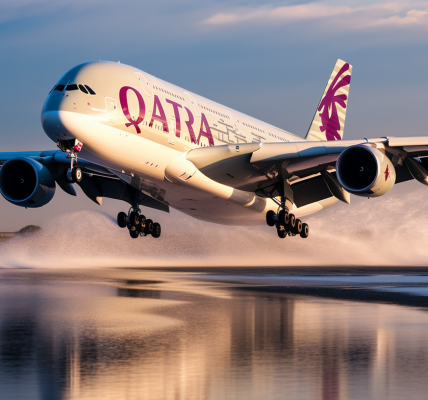Heathrow Airport, a bustling hub of international travel and commerce, is not owned by a single entity or country. Instead, it is managed by a consortium of global investors under the umbrella of Heathrow Airport Holdings Limited, a UK-based company. This consortium, known as FGP Topco Limited, includes a diverse range of stakeholders from around the world, reflecting the global significance of Heathrow as a major international airport.
A Global Consortium at the Helm
Heathrow Airport Holdings Limited, formerly known as BAA, is the operator of Heathrow Airport. The company is owned by FGP Topco Limited, a consortium led by infrastructure specialist Ferrovial S.A., which holds a 25% stake. Other significant shareholders include the Qatar Investment Authority with 20%, Caisse de dépôt et placement du Québec (CDPQ) with 12.62%, GIC with 11.20%, Australian Retirement Trust with 11.18%, China Investment Corporation with 10%, and Universities Superannuation Scheme (USS) with 10%.
Regulatory Oversight
While the ownership of Heathrow Airport is international, its operations are subject to UK regulations. The Civil Aviation Authority (CAA) and the Competition and Markets Authority (CMA) oversee its financial operations. In terms of safety and security, the airport is regulated by the UK Government and the CAA.
Heathrow’s Evolution
Heathrow Airport has evolved significantly since its inception as a private airfield in 1930. It was developed into a larger airport after World War II and has since expanded to include two parallel east-west runways, four operational passenger terminals, and one cargo terminal. Today, it is the second-busiest airport in the world by international passenger traffic and the primary hub for British Airways and Virgin Atlantic.
FAQ
Who owns Heathrow Airport?
Heathrow Airport is owned by Heathrow Airport Holdings Limited, which is in turn owned by a consortium led by Ferrovial S.A. Other significant shareholders include the Qatar Investment Authority, Caisse de dépôt et placement du Québec (CDPQ), GIC, Australian Retirement Trust, China Investment Corporation, and Universities Superannuation Scheme (USS).
Who regulates Heathrow Airport?
Heathrow Airport is regulated by the Civil Aviation Authority (CAA) and the Competition and Markets Authority (CMA) in terms of financial operations. For safety and security, it is regulated by the UK Government and the CAA.
What is Heathrow Airport’s history?
Heathrow Airport started as a private airfield in 1930 and was developed into a larger airport after World War II. It has since expanded to include two parallel east-west runways, four operational passenger terminals, and one cargo terminal.
Glossary
Consortium: A group of companies that come together to undertake an enterprise or project.
Civil Aviation Authority (CAA): The statutory corporation responsible for overseeing and regulating all aspects of civil aviation in the UK.
Competition and Markets Authority (CMA): An independent non-ministerial government department in the UK, responsible for promoting competition for the benefit of consumers.
Ferrovial S.A.: A Spanish multinational company involved in the design, construction, financing, operation and maintenance of transport, urban and services infrastructure.
Qatar Investment Authority: The sovereign wealth fund of Qatar, specializing in domestic and foreign investment.
Caisse de dépôt et placement du Québec (CDPQ): An institutional investor that manages several public and parapublic pension plans and insurance programs in Quebec, Canada.
GIC: A sovereign wealth fund established by the Government of Singapore to manage Singapore’s foreign reserves.
Australian Retirement Trust: An Australian superannuation fund.
China Investment Corporation: A sovereign wealth fund responsible for managing part of the People’s Republic of China’s foreign exchange reserves.
Universities Superannuation Scheme (USS): One of the UK’s largest principal private pension schemes for universities and other higher education institutions.




